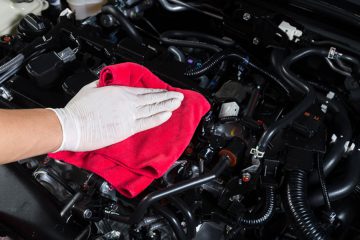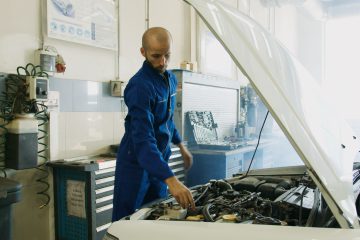Whether you want to perform a do-it-yourself (DIY) repair on your car by yourself for the savings, or because you want to be the only one to touch your precious vehicle, or you simply want to be prepared for any unwanted incidents, it is a must to have the necessary tools and knowledge to be your very own auto mechanic.
Thankfully, the internet can now provide various tips and tricks for your car’s repair and maintenance. You can virtually find all the details you want for any type of car problem—from troubleshooting funny noises to solving engine problems, to finding the best type of engine oil.
More than that, more and more people are buying auto parts online from credible and reliable sources like Autopartsway.com. Ordering parts online not only offer discounts, but also allow you to make your own simple installs and repair jobs and save even more money. Let’s face it, paying a mechanic for such simple jobs such as replacing filters or some nuts and bolts, can only bring you longer, yet unnecessary repair bills. However, before you do attempt any DIY task or try an unfamiliar process in hopes of repairing some part damage, keep in mind some valuable guidelines, or else you might end up causing bigger problems for you and your car.
DIY Tip 1. Purchase a repair manual or CD for your specific vehicle. You will soon find that most repair instructions online would ask you to check your manufacturer’s recommendations. Thus, it’s advisable to keep a paper manual, because it would be a handy reference for your car’s specific needs. You can also print out instructions you might find on the repair CD, just for easier reading.
DIY Tip 2. Make sure that you have all the necessary and correct tools for the job. Invest in a good tackle box with all the bolts and screws, and all the other tools you might need. Luckily, most of these tools are sold in sets, so you would not need to worry about picking out individual pieces. You may also want to think of extensions and flex-heads for those ratchets and hard-to-reach areas. Moreover, in some cases, you may need special tools for certain tasks, so before you attempt a repair, make sure you have bought all the parts and tools that you need, or else you might need to stop in the middle of a repair just because you are missing one item.
DIY Tip 3. Dealing with nuts and bolts may seem like a simple task, but before you remove any parts or hardware that is rusted or corroded, it’s a good idea to treat them first with some sprays that would help loosen them. Without doing this, you can easily strip or break those nuts and bolts, and if you break one, it might be impossible to take them out except to drill or cut them.
DIY Tip 4. Organize by labeling all your materials. You can use small aluminum trays and even zip-lock bags to keep your parts and tools visible and sorted from each other. Working with trays will also give you some space to clean some parts before installing them. Good organization will also help you avoid losing those parts and tools, or even terrible instances where a nut will fall into a crevasse in the engine and it’s simply impossible for you to reach. All in all, working in an organized manner will make any repair and re-assembly a more efficient process.
DIY Tip 5. Finally, while being a DIY-er has its benefits, do not do any major repairs if you are not comfortable. You must always care for your safety first, and if you have a good amount of discomfort, this can be a tell-tale sign that you should not move forward. An improper repair can not only cause major damage to your car, it can also compromise your safety. If you do want to save money, you can still order the parts you need from your favorite online parts store, and ask your neighborhood trusted mechanic to repair the car and deduct the price of the parts from your repair bill.
For all your tools and parts needs, check out Autopartsway.com. We offer high quality components with great discounts that will help you with those DIY projects.



